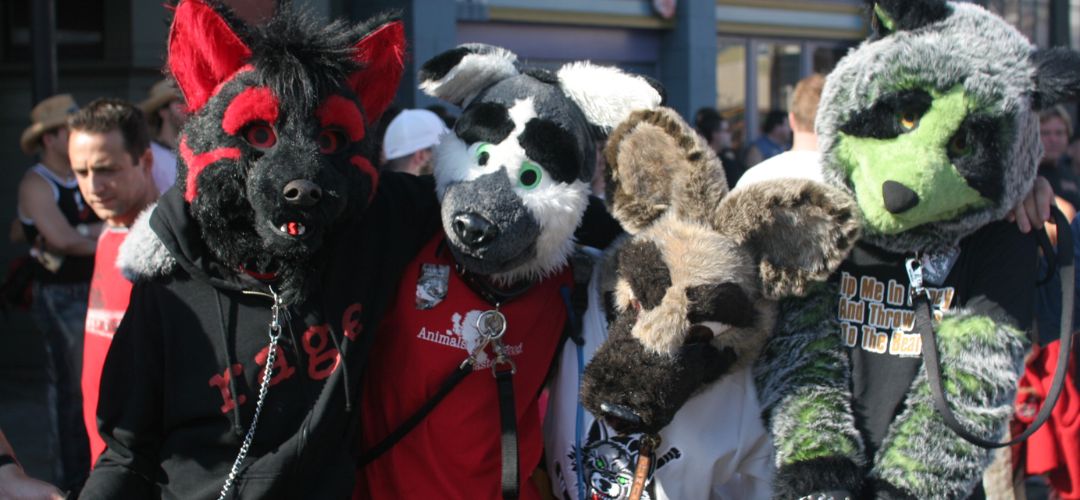35Views
All the single furries: Inside the world of people obsessed with fur culture

“It’s not a fetish, it’s an identity. A community” said Dominic Rodriguez, director of Fursonas documentary.
As it turns out, the furry world goes far beyond their fuzzy costumes or their fursonas. They are a creative community that in fact, has something very important to teach us.
All the single furries
What is a fury anyway?
Perhaps the answer to that question is easier than imagined. Furries are people; doctors, students, musicians, mothers, and artists of all kinds fascinated by the anthropomorphic (human characteristics) of animals.
That said, not all furries go so far into the fursuit. For some, the suit rather represents a right of passage. But basically, a furry can be anyone who plainly identifies or enjoys the fandom.
Still, there are those who find comfort and security underneath their shaggy outfit and prefer to wear them more often than not. Take the case of Boomer the Dog, or Gary, a 48-year-old man, who follows the dog philosophy and embraces it as a lifestyle.
So far goes his passion that in 2015, Gary tried to change his legal name to Boomer the dog.
But for many is less about the furry and more about the culture. Being an extraordinary way to create a personal brand, some furries find comfort in the creative process that’s invested. They get to tell unique stories in the most creative of ways.
The community welcomes extremely diverse groups that do not discriminate on gender, color, race, or religion. And people with diverse backgrounds have been able to find an intangible sense of belonging.

So, furries are interesting, creative, and weird. The good type of weird; they are weirdly inclusive.
First impressions are lasting impressions
“Every family has its uncle Frank,” says Uncle Kage, chairman of the Anthrocon, the world’s largest Furry convection.
And for many years there has been an incredible misconception about the Furry Fandom.
Apparently, it all started during 1980 when Mark Merlino and Rod Standfield noticed a growing fury fandom among the science fiction convections. By 1989, what started as an experiment, became the first known furry convention — ConFurence Zero, at a Holiday Inn in Garden Grove, California.
The event was designed for young, diverse people, with “colorful hobbies.” And naturally, it was marketed as such.
Honestly, who can blame them for using sex as a way to attract the youth?
But, however brilliant the idea was, it did not exactly represent the whole environment and for years the community has been fighting to fix this image.
Nevertheless, there is always that “Uncle Frank” explains Conway.
“You know, that uncle you can’t tell him not to come because he is family, but no one actually wants him there.” He is talking about those sex maniacs that, for decades, have managed to depict the community as sexual fetishists wearing furry costumes. And who has become the media’s favorite persona?
In fact, the furry community has been largely annoyed about how they have been portrayed by mainstream media. And convections like Anthrocon have very strict codes of conduct to avoid any sexual behavior.
Sure, sex is part of the culture, the majority of furries are college students in their 20s, but so is Greek life.
Behind the mask
In a world packed with stereotypes and norms, it does not come as a surprise that for many, the furry fandom has become an open space for self-expression and belonging.
Research conducted by furscience.com reported that a lot of furries have been “significantly more bullied that the average person.”

The report showed that 43% reported being bullied from the ages of 4-10. 61% reported being bullied from ages 11-18 and, 15% reported being bullied from ages 19-24. Some numbers are almost twice as likely as the “average person” in some age groups.
As it happens, behind their furry customers and masks, it is really easy to leave stereotypes behind, providing a liberating and creative space for its participants to express themselves and relate with other people.

Yet, there is no proof that the furry culture attracts victims of bullying. But the website explains that many furries have benefited from the interaction with like-minded people in recreational environments. All of which help increase self-esteem and life satisfaction.
So, whether it is a hobby, a business, or even a lifestyle, the furry community is a really good place to be yourself.



